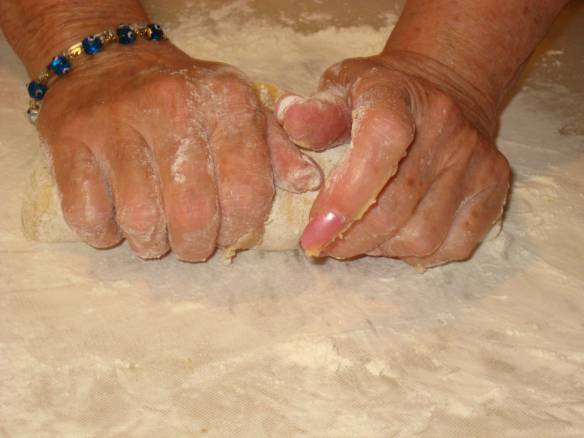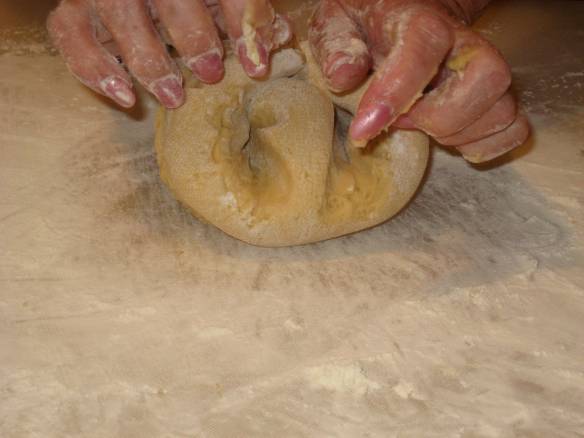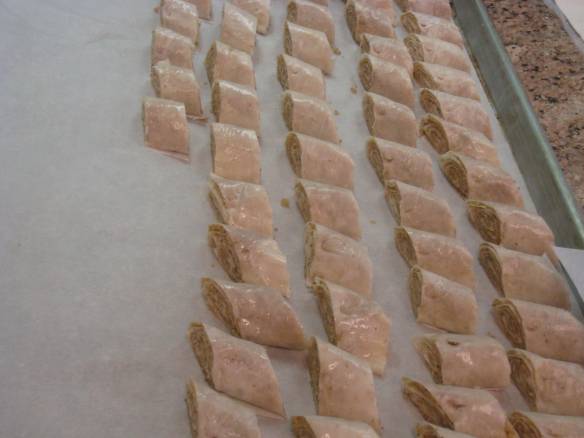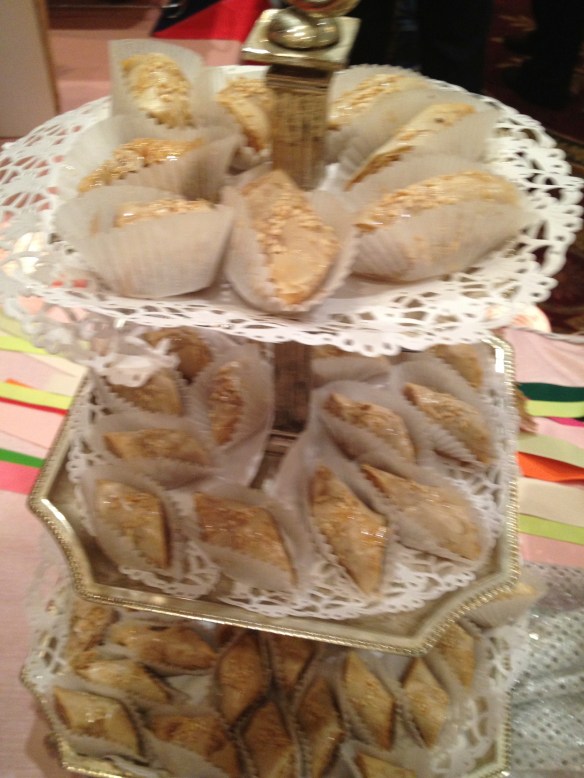Purim is right around the corner! Amongst the traditions of the holiday is the exchanging of gifts of food with one another. Many communities exchange ‘misloach manot’ (Hebrew: sending of portions). In our Ladino community, I’ve always heard it referred to as Platikos di Purim (Purim plates). As part of the Platikos, my mother usually makes biscochos, boulicunio, baklava. I am reprinting a few of her recipes in this post, below. Here is a piece we published a few years back with the recipe for ‘foulares’, representing ‘Haman in Jail’, a favorite with our children. This includes a recipe from my dear friend, cookbook author and blogger, Linda Capeluto Sendowski (check our her new cookbook here). In addition, I have included two articles in this post. One is from one of my favorites, Ty Alhadeff, Sephardic Studies Research Coordinator at the Storm Center for Jewish Studies at the University of Washington. It is entitled “Sephardic Purim Customs from the Old World to the Pacific Northwest”. The second is an article from Ynet by Matilda Koen-Sarano with her recollections of Purim. I hope you’ll enjoy them both of them.
In the month of Adar, our joy is increased. In commemoration of Haman’s evil decree to annihilate the Jewish people in ancient Persia and the miracle of the turnaround from fear to triumph as Queen Esther and her uncle, Mordechai, found favor with the King and the Jewish people were spared and Haman, instead, was hanged, we rejoice, we remember, we celebrate and we stand strong;
May we continue to celebrate in joy; may we share memories and stories of the holidays past with our children and grandchildren; may we create new memories with them, as we celebrate today. May ‘evil decrees’ be lifted and light and right triumph over darkness. May we savor the treats we bake and share, and may our hands always be blessed.
Purim Alegria!
~Bandichos Manos
###
Biscochos de Huevo – Kaye Hasson Israel
Biscochos are often called tea biscuits. We think of them as a “biscotti”, a crunchy treat! Biscochos are a bit sweet and are wonderful with your morning coffee (could be afternoon or evening coffee or tea or even milk, for that matter!!)
Ingredients for My Mom’s Biscochos
1 C eggs
1 C sugar
3/4 C oil
3 tsp baking powder
1 tsp vanilla flavoring
5 – 7 C flour
Topping:
1 egg + 1 drop of water, beaten well
sesame seeds
(alternative to sesame seeds: cinnamon and sugar or “sprinkles”)
These are my mom’s directions:
With electric mixer, beat eggs and oil in a mixing bowl. Add sugar and vanilla and continue to beat until well blended. Add flour and baking powder gradually, knead into a medium dough until no longer sticky.

Place onto floured work area and finish kneading dough with additional flour as needed. Dough should not be sticky as long as you can handle it without it sticking to your hands.

Take walnut-sized pieces and roll down on table with palms of hands into a rope 5 inches long and only 1/2 inch thick.

Press down with fingers to create channel;

Fold rope over and cut slits into the edge.

Join into a bracelet shape. Brush egg on top side.
Dip top side into chosen topping ( sesame, cinnamon sugar or sprinkles):

Place on cookie sheet lined with parchment paper. Bake in preheated 350 degree oven for 12 minutes or until lightly brown. Remove from pan. Allow to cool.

Now…time to sit down with a cup of coffee and a biscotto and relax!
Baklava – Kaye Hasson Israel
Baklava is a sweet pastry made of layers of Filo dough filled with chopped nuts and bathed in a sweet syrup. It is labeled as a Turkish, Greek or any of a variety of Middle Eastern delicacy. Our families made it on the Island of Rhodes, so we claim it as our own.
There are many variation in making Baklava. Different communities feature different nut mixtures and dIfferent configurations when baking. My mom makes a rolled variety. Here is her recipe:
Kaye Hasson Israel makes Baklava
ingredients:
1 Lb prepared FIlo Dough
5 Cups almonds, ground (or other nuts of your choosing)
1 C Sugar
1/2 tsp ground Cinnamon
1 tsp ground cloves
1 C oil in a small bowl.
1/2 C Tasted Sesame Seeds (optional)
Prepare a mixture using ground nuts, sugar, cinnamon and gloves. Set aside.
Open package of Filo. Keep moist and usable by placing a moist cloth over the waxed paper covered batch of Filo that you are not currently using ( otherwise, Filo has a tendency to dry out).
Place one layer of Filo on your work surface. Brush with oil. Place a second layer of Filo directly on top. Brush second layer with oil.

Sprinkle nut mixture in a thin, even layer on brushed Filo. Top with one additional sheet of Filo. Brush with oil.

Begin to roll Filo tightly. Slice rolled Filo log at a diagonal. Cut approximately 1 inch in length. Place cut pieces on a cookie sheet, lined with parchment paper.

Bake in a 350 degree oven for approximately 20 minutes (Since ovens vary, watch as it bakes…when it begins to take on color, you can remove from the oven)
Allow to cool.
In the meantime, prepare syrup.
Syrup ingredients:
1 1/2 C Honey
1 1/2 C Sugar
1 C Water
Combine all ingredients. Boil on stove. Cook until it becomes “sticky” (if you have a cooled bit between your fingers, it should form “strings”)
When syrup is ready, pour over tray of baked Baklava. Allow syrup to soak in.

For serving, “soaked” piece of Baklava can be placed in size-to-fit paper Bake Cups (often called Cupcake liners) and placed on a serving platter.

Divine!!!!!
We look forward to your comments. Join the conversation as part of our Facebook Group, Bendichas Manos!
~Bendichas Manos
